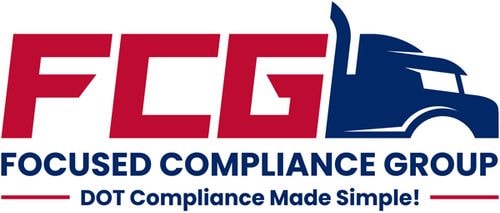Non Domicile CDL: A Sudden Shift in Federal Trucking Policy
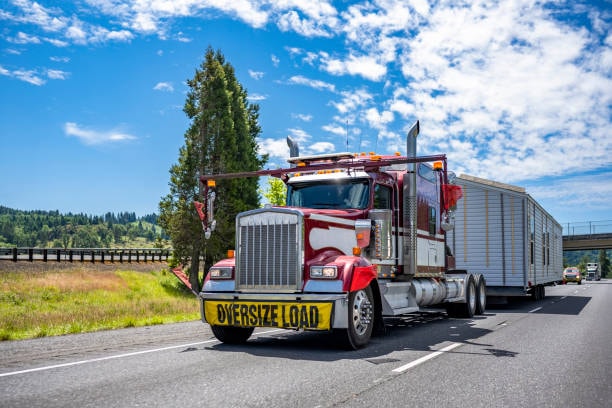
The U.S. trucking industry has experienced plenty of regulatory changes over the years, but few have arrived as abruptly as the Department of Transportation’s new emergency rule on non-domiciled commercial driver’s licenses (CDLs).
On September 26, 2025, the Federal Motor Carrier Safety Administration (FMCSA) issued an interim final rule that fundamentally reshapes how non-domiciled CDLs are issued, renewed, and revoked across the country.
Unlike the usual multi-month process of proposed rulemaking, stakeholder input, and public hearings, DOT invoked its emergency authority under federal law to bypass the comment period, citing an “imminent hazard” to highway safety. The Department of Transportation also announced direct enforcement action to address systemic licensing failures.
This means the rule took effect the moment it was published in the Federal Register—an unprecedented step that caught many carriers, compliance managers, and state licensing agencies off guard. This immediate enforcement action was intended to prevent a foreseeable and concentrated surge of unqualified applicants seeking non-domiciled CDLs before the new restrictions took effect.
Nearly 200,000 drivers who currently hold non-domiciled CDLs may be directly impacted. Entire fleets may need to be restructured, and state licensing systems must be overhauled almost overnight.
At Focused Compliance Group (FCG), we believe industry leaders need to understand what is changing, why it is happening, and what steps they must take immediately to remain compliant and avoid disruption.
Background and Regulatory Framework
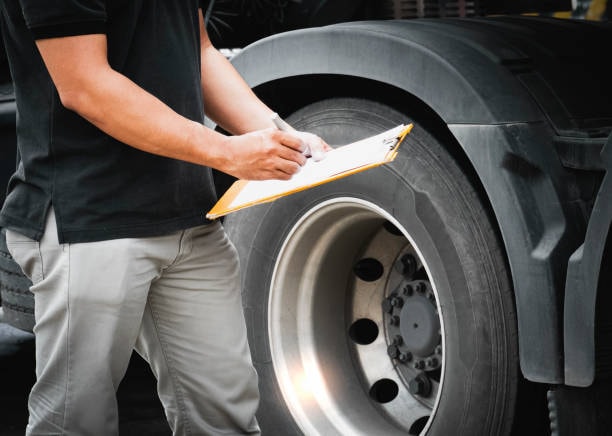
The issuance of non-domiciled commercial driver’s licenses (CDLs) has long been a focal point for the Federal Motor Carrier Safety Administration (FMCSA) as it seeks to uphold federal motor carrier safety standards and protect the public from unsafe foreign drivers. Under the current regulatory framework, states were permitted to issue non-domiciled CDLs and commercial learner’s permits (CLPs) to non-citizen applicants who could demonstrate lawful immigration status. However, this system has faced mounting criticism for being overly broad, inadvertently allowing ineligible drivers to obtain non-domiciled credentials and exposing U.S. highways to increased risk.
A recent nationwide audit by the carrier safety administration FMCSA uncovered widespread noncompliance among state driver’s licensing agencies. The audit revealed that some states were issuing non-domiciled CDLs to foreign drivers whose work authorizations had expired or who lacked sufficient documentation, such as an unexpired foreign passport or an unexpired Form I-94/I-94A. In other cases, non-domiciled CDLs were granted without proper verification of lawful immigration status, undermining the integrity of the commercial driving credentials system.
In response to these findings, the FMCSA announced an emergency interim final rule, effective immediately, to prevent unsafe foreign drivers from obtaining or renewing non-domiciled CDLs. The emergency rule requires states to halt the issuance of non-domiciled CDLs and CLPs until they can demonstrate full compliance with the updated federal regulations. States that fail to comply risk the withdrawal of critical federal highway funds, underscoring the seriousness of the directive.
The interim final rule also introduces stricter requirements for non-citizen applicants. Commercial truck operators seeking non-domiciled credentials must now present an unexpired foreign passport, an unexpired Form I-94/I-94A, and undergo verification through the SAVE system to confirm lawful immigration status. The FMCSA has also strengthened English language enforcement to ensure that only qualified drivers are entrusted with commercial motor vehicles.
According to FMCSA estimates, the new emergency rule will impact approximately 200,000 current non-domiciled CDL holders and 20,000 commercial learner’s permit holders. Under the tightened eligibility criteria, only about 6,000 drivers annually are expected to qualify for non-domiciled CDLs, marking a significant reduction in the issuance of non-domiciled commercial driving credentials. This decisive action is intended to close dangerous loopholes, prevent ineligible and unsafe foreign drivers from operating on U.S. roads, and restore public confidence in the federal motor carrier safety system.
Understanding Non-Domiciled CDLs
A non-domiciled commercial driver’s license is issued to an individual who is legally present in the United States but who is not a permanent resident or U.S. citizen.
These drivers include foreign nationals admitted under temporary work visas, international drivers participating in cross-border trucking, and certain individuals authorized to work under immigration programs that do not confer permanent status.
Historically, states have enjoyed considerable flexibility in issuing these licenses under federal oversight, provided that applicants could demonstrate lawful presence and work authorization.
Documents such as Employment Authorization Documents (EADs), temporary visas, and immigration parole notices were often sufficient to prove eligibility. Many renewals could even be processed remotely by mail or online—a convenience for both drivers and licensing offices. Foreign applicants often benefited from these overly broad eligibility requirements, which allowed a wide range of individuals to qualify for non-domiciled CDLs.
This flexibility allowed carriers to tap into an international labor pool, easing persistent driver shortages, particularly in long-haul and seasonal freight sectors where domestic recruitment has been challenging.
However, the same flexibility also created vulnerabilities in the system, as federal audits have repeatedly shown.
Why DOT Acted Now: Safety, Compliance, and Security
DOT officials pointed to a series of systemic failures as justification for bypassing the normal rulemaking process.
First, federal program reviews identified widespread compliance breakdowns at the state level. In some states, non-domiciled CDLs were issued with expiration dates extending beyond a driver’s authorized stay in the country.
Other states allowed renewals by mail or online without any fresh verification of immigration status. These practices created loopholes that allowed drivers to continue operating long after their legal status had lapsed.
Second, a string of safety incidents added urgency. In 2025 alone, at least five fatal crashes occurred involving non-domiciled CDL holders, with fatal crashes occurring as a result of improper licensing. While not every crash was directly attributable to improper licensing, DOT argued that the lack of consistent verification undermined its ability to ensure that all drivers were legally and safely authorized to operate.
Third, security concerns loomed large. Commercial vehicles are powerful assets that can be exploited for harmful purposes if they fall into the wrong hands. DOT expressed concern that lax verification made the program vulnerable to misuse, especially in areas involving hazardous materials or sensitive freight. Unsafe non-domiciled CDL drivers were considered a direct threat to public safety and national security.
Taken together, these findings convinced DOT that the existing program presented an imminent hazard to public safety and national security, warranting immediate emergency action.
Scope of the Emergency Rule for Non-Domiciled CDL Holders
The interim final rule reshapes the landscape for non-domiciled commercial driver’s licenses (CDLs) in several critical ways, specifically targeting the issuance and renewal processes for these credentials.
Narrowed Eligibility. Only individuals lawfully admitted to the United States in specific employment-based visa categories—H-2A (agricultural workers), H-2B (non-agricultural seasonal workers), and E-2 (treaty investors)—may now obtain or renew a non-domiciled commercial learner’s permit (CLP) or CDL.
Employment Authorization Documents, once widely accepted, no longer qualify on their own. An unexpired employment authorization document alone is no longer sufficient for the commercial driver’s license issuance processes. Every applicant must present an unexpired foreign passport along with an unexpired I-94 or I-94A showing admission in one of the approved categories.
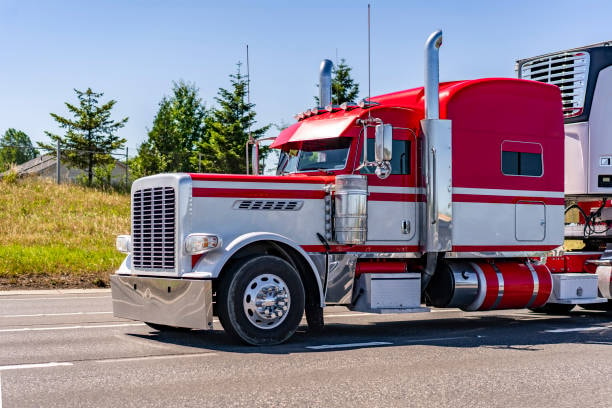
Shorter Validity. A non-domiciled CDL may not extend beyond the expiration of the driver’s legal admission and, in any case, may not be valid for longer than one year. The rule specifically addresses the issue of licenses remaining valid after a driver’s legal presence expired, preventing situations where a CDL extends beyond lawful immigration status. This will force drivers and carriers into more frequent renewal cycles closely tied to immigration timelines.
In-Person Renewals. States are now prohibited from renewing these credentials by mail or online. Each transaction must be completed face-to-face at the licensing office, where staff can directly verify documents.
Mandatory SAVE Verification. States must confirm immigration status using the federal Systematic Alien Verification for Entitlements (SAVE) database. Each applicant’s nonimmigrant category must be verified, and states must retain copies of the applicant’s passport, I-94, and SAVE results for at least two years to create a permanent audit trail.
Rapid Downgrades and Revocations. If a driver’s immigration status changes or is revoked, the state must downgrade or revoke the CDL within thirty days. This provision means carriers could lose drivers on very short notice, depending on visa status changes outside their control.
These changes, taken together, represent one of the most significant overhauls of non-domiciled CDL policy in decades.
In the next sections of this expanded guide, we’ll examine how these new requirements are likely to affect carriers, drivers, and state agencies; outline practical steps to remain compliant; and explore longer-term implications for the U.S. trucking workforce.
Immediate Industry Impact: Carriers Under Pressure
The trucking industry is already bracing for significant disruption. Analysts estimate that nearly 194,000 drivers could be disqualified under the new eligibility criteria.
Many of these drivers hold visas or work authorizations outside the approved H-2A, H-2B, or E-2 categories—such as asylum seekers, DACA recipients, or individuals on temporary employment visas not included in the rule.
For fleets that rely heavily on these drivers, the loss will be immediate and severe. Routes may need to be canceled, contracts may be jeopardized, and operational costs may rise sharply as companies scramble to fill vacancies.
The rule does not discriminate by fleet size. While large national carriers may be able to absorb the hit by redistributing drivers, smaller regional carriers are often less flexible and may feel the disruption most acutely.
Recruiting challenges are expected to intensify. With fewer eligible drivers available, carriers will likely need to raise wages, improve benefits, or expand training programs to attract U.S. citizens and permanent residents.
These shifts could create ripple effects across the economy, as rising trucking costs feed into supply chain prices and ultimately into consumer goods.
The Strain on Smaller Carriers
Smaller carriers, particularly family-owned operations and niche fleets, often depend on cost-effective labor from non-domiciled drivers.
These companies already operate on razor-thin margins. The sudden loss of drivers could make it impossible for them to meet delivery schedules, retain contracts, or compete with larger firms that have broader recruiting resources.
For many, the choice may be stark: either shut down certain lanes of business, or rapidly reinvent their workforce model.
In some cases, the rule may accelerate industry consolidation, as smaller fleets decide to sell to larger competitors rather than endure prolonged financial strain.
Carriers who anticipate this risk can soften the impact by diversifying their labor sources now—before attrition leaves them without options.
State-Level Implementation Challenges
While carriers struggle with workforce issues, state driver’s licensing agencies face an equally daunting task: immediate compliance with the new rule.
Unlike most federal changes, there is no grace period or transition timeline. State driver’s licensing agencies must implement these requirements immediately or risk losing federal highway funding.
For example, California, which has one of the largest populations of non-domiciled CDL holders, has already been ordered to audit and revoke improperly issued licenses within thirty days. Some states have been cited for states issuing licenses illegally to non-domiciled drivers, raising significant safety concerns. Gross negligence Washington is a notable example, where inadequate licensing oversight led to unsafe drivers on the roads and prompted federal intervention. South Dakota has also faced scrutiny for its role in issuing non-domiciled CDLs under the new emergency regulations.
States that previously allowed mail-in or online renewals must redesign their systems and retrain staff almost overnight to handle in-person-only applications.
SAVE system integration is another hurdle. While many states already use SAVE for certain verification processes, not all have the infrastructure in place to meet DOT’s strict documentation and retention standards.
These changes will likely create bottlenecks at licensing offices, with longer wait times for drivers, frustrated applicants, and administrative backlogs that may slow the issuance of new credentials.
Operational Planning for Fleets
For carriers, the key to navigating this rule is not panic, but planning. Companies that act quickly and strategically will be best positioned to weather the disruption.
The first step is awareness. Carriers must immediately audit their driver rosters to identify which employees hold non-domiciled CDLs and which visa categories they fall under.
Not every driver will be disqualified, but anyone outside the narrow visa categories approved by DOT is now at risk.
Once identified, carriers should forecast attrition rates. How many drivers may be lost? How quickly will replacements be needed? What percentage of freight commitments could be jeopardized?
These forecasts should feed into broader operational planning, including route redesign, freight prioritization, and contract renegotiation.
Larger carriers may be able to shift resources internally, but smaller carriers may need to reduce commitments or partner with other fleets to maintain service levels.
Communication With Drivers: Clarity and Consistency
Clear communication is essential in times of regulatory change. Drivers need to know what the new requirements mean for them personally and what steps they must take to remain compliant.
Carriers should develop standardized communication materials, including FAQs, checklists, and guidance on the documentation drivers will need to present at state licensing offices.
Transparency matters. Drivers should be told as soon as possible if they are no longer eligible under the new rule. Delaying this conversation will only create frustration and distrust.
At the same time, carriers can demonstrate good faith by providing assistance—whether by covering travel expenses for in-person renewals, offering paid time off for licensing appointments, or connecting drivers with legal resources to explore visa options.
A proactive communication strategy will not prevent every driver loss, but it will strengthen relationships and minimize operational surprises.
Documentation Checklist for Non-Domiciled Drivers
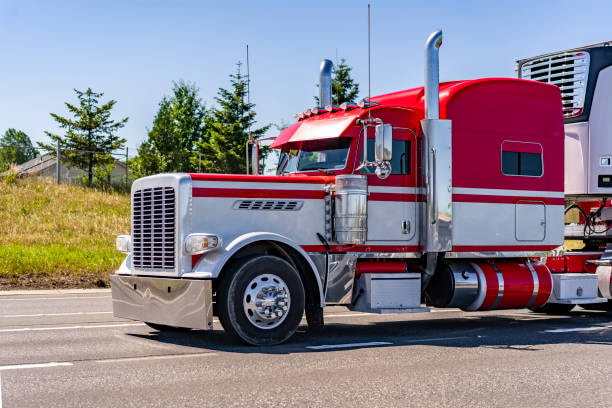
Carriers should ensure drivers understand exactly what paperwork is now required to obtain or renew a CDL. At a minimum, drivers must bring:
- An unexpired foreign passport.
- An unexpired I-94 or I-94A showing admission in H-2A, H-2B, or E-2 status.
- Any supporting documentation required by the state licensing agency, including visa paperwork and work contracts.
- Proof of residency within the state where the CDL is being issued or renewed.
- Lawful presence documentation as required by federal and state regulations.
Carriers can support drivers by maintaining copies of these documents in their personnel files. While DOT requires states to keep their own records, companies that maintain parallel documentation will be better prepared for audits and compliance reviews.
Preparing for Administrative Burdens

Beyond workforce attrition, carriers must prepare for new administrative challenges. Monitoring immigration status will become a critical part of fleet management.
Companies may need to implement internal tracking systems to monitor visa expiration dates, CDL renewal deadlines, and SAVE verification outcomes.
This means compliance managers will need training on immigration timelines and closer coordination with human resources teams.
Failure to implement these processes could result in drivers operating without valid credentials—a liability that exposes carriers to fines, lawsuits, and potential revocation of operating authority. The ongoing nationwide audit by FMCSA will increase scrutiny of carrier compliance with the new non-domiciled CDL requirements.
Commercial Drivers and Training: Adapting to New Standards
The implementation of the emergency rule on non-domiciled CDLs is prompting a major shift in how commercial drivers and training programs operate. Motor carriers must now ensure that all non-domiciled drivers meet the new, more restrictive eligibility requirements, including proof of lawful immigration status and compliance with the SAVE system. This means that carriers will need to update their internal processes for verifying documentation, tracking immigration status, and supporting drivers through the new CDL issuance process.
For commercial drivers, the changes are immediate and significant. Non-domiciled CDL holders must now renew their credentials in person every year, presenting an unexpired foreign passport and an unexpired Form I-94/I-94A, with their lawful immigration status verified through the SAVE system. States are required to retain copies of these documents for at least two years, creating a permanent audit trail and ensuring that only drivers with current, valid status are allowed to operate commercial motor vehicles.
The FMCSA recognizes the operational challenges these changes present and has committed to providing guidance and support to both motor carriers and drivers. Regular audits will be conducted to ensure that states and carriers are adhering to the new requirements, and the agency is working closely with industry stakeholders to facilitate a smooth transition.
Commercial driving schools and training programs are also being called upon to adapt. Curricula and training materials must be updated to reflect the new eligibility standards, the importance of verifying lawful immigration status, and the procedures for obtaining and renewing non-domiciled CDLs. Training providers will need to educate both new and existing drivers on the documentation required, the annual in-person renewal process, and the consequences of failing to maintain lawful status.
The FMCSA estimates that the first-year compliance costs for states will total approximately $3.2 million across 46 affected states, with each state facing an average of $70,000 in administrative and training expenses. While these costs are significant, the agency believes they are justified by the need to prevent fatal crashes caused by unsafe or ineligible foreign drivers and to enhance the overall safety of the commercial trucking industry.
By strengthening English language enforcement, mandating SAVE system verification, and requiring rigorous documentation, the emergency rule aims to prevent unsafe drivers from slipping through the cracks. For motor carriers, commercial drivers, and training programs, adapting to these new standards is not just a regulatory obligation—it is a critical step toward safeguarding public safety and maintaining the integrity of the nation’s commercial transportation system.
Building Workforce Resilience

While the immediate outlook seems daunting, forward-thinking carriers can treat this disruption as an opportunity to build a stronger, more resilient workforce. This may involve cross-training existing employees, investing in driver retention programs, or partnering with training schools to expand the pipeline of domestic drivers.
Some carriers may even explore automation or technology-assisted solutions, such as route optimization software, to reduce dependency on human drivers in the most labor-intensive lanes. Additionally, modernizing driver resources—such as expanding truck parking and updating training programs—can help carriers adapt to the new regulatory landscape.
By treating compliance as a catalyst for long-term improvement rather than a short-term crisis, companies can emerge stronger on the other side of this transition.
Looking Ahead to Part 3
The emergency rule is already reshaping the trucking landscape, and its effects will continue to unfold in the months ahead.
In the final section of this expanded guide, we’ll explore recruitment and retention strategies, legal and compliance considerations for 2025–2026, case studies of how carriers are responding, best practices for navigating uncertainty, and the long-term road ahead.
Recruitment and Retention Strategies in a Shrinking Labor Pool
With non-domiciled CDL eligibility now sharply limited, carriers must rethink how they recruit and retain drivers.
One immediate tactic is to expand outreach to U.S. citizens and permanent residents who may have previously overlooked trucking careers.
This could include partnering with high schools, community colleges, and vocational programs to build awareness about commercial driving as a viable career path.
Offering tuition assistance or paid training for CDL school can also help attract new entrants to the industry, especially younger workers seeking stable employment.
Beyond recruitment, retention is critical. Companies that lose experienced drivers faster than they can hire replacements will face ongoing capacity constraints.
Retention strategies might include signing bonuses for existing drivers, improved benefits packages, predictable home time, and career advancement pathways within the company.
In some cases, carriers can experiment with flexible scheduling, part-time routes, or job-sharing arrangements to make trucking more appealing to a broader workforce.
By approaching both recruitment and retention as a coordinated strategy rather than separate problems, carriers can create a more sustainable labor model.
Legal and Compliance Considerations for 2025–2026

Although DOT issued this as an interim final rule, FMCSA is accepting public comments through November 28, 2025.
This means there is still an opportunity for carriers, trade associations, and other stakeholders to influence how the rule is implemented or refined.
Companies should consider submitting formal comments that document specific hardships, propose transitional measures, or suggest alternative verification methods that maintain safety while easing administrative burdens.
In parallel, carriers must prepare for heightened enforcement. FMCSA has taken direct enforcement action against states that fail to comply with the new requirements, including withholding federal funds and issuing sanctions. State agencies are under pressure to demonstrate compliance, which could translate into more frequent audits of driver records and more aggressive penalties for violations. Additionally, the rule closes dangerous loopholes in the non-domiciled CDL issuance process to enhance highway safety and hold states accountable for non-compliance.
Carriers should ensure that their recordkeeping, driver qualification files, and immigration tracking processes can withstand scrutiny.
Consulting with legal counsel experienced in both transportation and immigration law may help identify vulnerabilities before they lead to fines or loss of operating authority.
Companies that proactively align with the new requirements will not only reduce risk but may also gain a competitive edge as less-prepared competitors struggle.
Case Studies: How Carriers Are Responding
To illustrate the industry’s early response, consider three hypothetical but realistic scenarios based on current trends. These scenarios reflect the real-world impact of having non domiciled CDLs reviewed and revoked under the new regulations.
Case Study 1: A Large National Carrier. This carrier identified 12 percent of its drivers as non-domiciled CDL holders outside the approved visa categories. It immediately launched a recruitment drive targeting military veterans and sponsored 500 CDL trainees through community college programs.
By forecasting attrition and backfilling positions ahead of time, the company expects to maintain service levels without major contract losses.
Case Study 2: A Mid-Sized Regional Fleet. This fleet lost 40 drivers overnight due to visa disqualification. Without the resources to recruit at scale, it formed a cooperative arrangement with another carrier to share drivers on certain routes and invested in route-planning software to increase efficiency.
Though painful initially, the changes allowed the company to stabilize operations within six months.
Case Study 3: A Small Family-Owned Carrier. Facing the loss of one-third of its workforce, this company decided to pivot from long-haul freight to specialized local deliveries requiring fewer CDL drivers.
By narrowing its focus and investing in retention bonuses for the remaining drivers, it preserved profitability and avoided closure.
These examples show that while the new rule is disruptive, proactive planning can turn crisis into opportunity.
Best Practices for Navigating Uncertainty
Based on the experiences of early adopters, several best practices emerge for carriers of all sizes.
Conduct a Comprehensive Driver Audit. Know exactly who in your workforce holds a non-domiciled CDL, their visa status, and renewal timelines.
Develop a Compliance Calendar. Track immigration expirations, SAVE verification dates, and CDL renewals in a centralized system. Ensure that all procedures for issuing commercial driving credentials are strictly followed to maintain compliance and uphold regulatory standards.
Communicate Early and Often. Provide drivers with clear guidance, reminders, and support for in-person licensing appointments.
Diversify Recruiting Channels. Engage with community colleges, veterans’ groups, and non-traditional labor pools to expand the pipeline of eligible drivers.
Invest in Technology. Route optimization, telematics, and automated compliance tools can reduce labor needs and minimize administrative errors.
Engage With Policymakers. Submit comments to FMCSA, participate in trade associations, and share data on the rule’s impact to shape future regulations.
These best practices won’t eliminate all challenges, but they provide a roadmap for surviving—and even thriving—under the new regulatory regime.
The Road Ahead: Long-Term Effects on U.S. Trucking
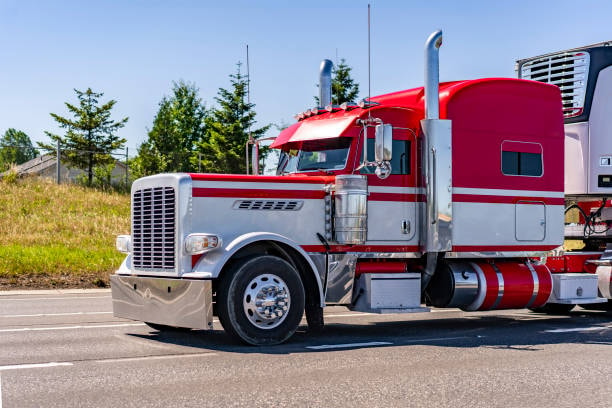
The emergency rule represents one of the most significant shifts in driver licensing policy in decades. The new rule fundamentally changes the standards for issuing commercial driver’s licenses to non-domiciled individuals, introducing stricter requirements and oversight.
By narrowing eligibility, enforcing stricter verification, and imposing immediate compliance, DOT has effectively redrawn the boundaries of who can drive commercially in the United States.
Over time, this may lead to a smaller but more tightly vetted pool of commercial drivers.
Carriers that act quickly—auditing their fleets, preparing for attrition, and investing in new recruitment strategies—will be best positioned to weather the disruption.
Those who delay may find themselves without enough drivers to meet customer demands, facing legal exposure, and struggling to recover lost ground. State agencies, too, will continue to refine their processes. Initial bottlenecks at licensing offices may ease as new systems and training take hold, but periodic federal audits will keep pressure high.
In the longer term, the rule could spur innovations in workforce development, technology adoption, and cross-border freight management. Coordination with foreign jurisdiction authorities may become increasingly important as regulatory standards evolve for commercial driver’s licenses and cross-border operations.
It may also influence immigration policy, as industry groups lobby for expanded visa categories or streamlined verification processes to replenish the driver pool.
For drivers themselves, the rule underscores the importance of maintaining up-to-date documentation, understanding immigration timelines, and planning career moves with regulatory changes in mind. The rule specifically aims to prevent dangerous foreign drivers from operating commercial motor vehicles on U.S. roads by tightening controls on non-domiciled and foreign-issued commercial driver’s licenses.
For carriers, the message is equally clear: compliance and workforce planning are no longer optional add-ons—they are core to operational survival.
Conclusion and Resources
The DOT’s emergency rule on non-domiciled CDLs arrived without warning, but companies do not have to respond blindly.
By understanding the new requirements, auditing their driver files, planning for attrition, and investing in recruitment and retention, carriers can minimize disruption and position themselves for long-term success.
Although the rule is in effect now, FMCSA’s comment period offers an opportunity to shape its future. Carriers should take advantage of that process to advocate for practical refinements.
At Focused Compliance Group, we specialize in helping fleets navigate complex regulatory changes with clarity and confidence.
Whether you need assistance understanding the new documentation requirements, auditing your driver files, or building a strategy for workforce continuity, our team is here to support you.
The rule may have changed overnight, but your response does not have to be reactive. With the right knowledge, planning, and support, companies can transform this regulatory challenge into an opportunity to strengthen operations, protect compliance standing, and build a workforce resilient enough to thrive in a changing environment.
